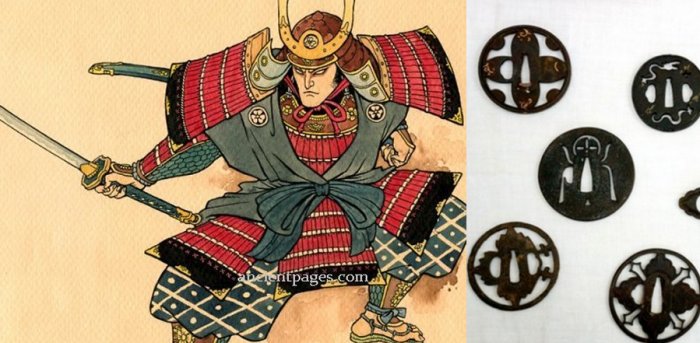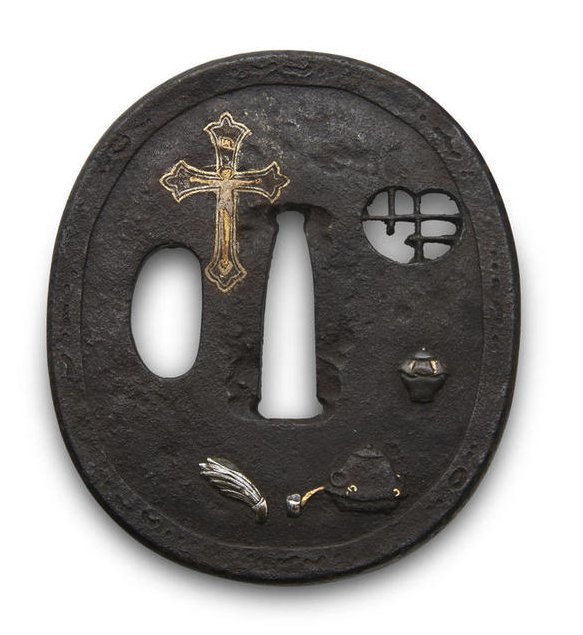Many Samurai Had Swords With Secret Crucifixes And Hidden Christian Symbols To Avoid Persecution
A. Sutherland - AncientPages.com - During the feudal era in Japan, also known as the Age of the Warrior, Christians were persecuted.
Christianity was banned in Japan, but some kept their deep faith despite persecution.
Left - Image source; Right: Image source - Sawada Miki Kinenkan Museum.
Hundreds of Japanese Samurai warriors were Christians, and they hid religious codes in their sword hilts. Several Samurai swords with secret crucifixes and hidden Christian symbols have been found.
The feudal era lasted from 1185 CE to 1868 CE. It was a time when the Emperor and the Shogun were the highest-ranking nobles.
The collapse of aristocratic rule ushered in a new age of chaos — appropriately called the Warring States period (c.1400-1600) — in which the military might dictate who governed and who followed.
During this period, Bushido, which means "way of the warrior," the warriors developed a code of chivalry as the samurai.
Early seventeenth century sword tsuba featuring an unusual crucifix in it’s decoration. Image credit: Revivaler
In 1549, Roman Catholic Jesuit missionaries led by Francis Xavier introduced Christianity to the East. Catholic missionaries initially brought the religion to the East around the mid-1500s.
However, it took only a short time before Christianity was banned. Toyotomi Hideyoshi (1536-1596), a Japanese warrior commander who later became an undisputed military dictator, prohibited the practice of Christianity and expelled all foreigners in 1638.
At the time, there were about 300,000 people in Japan. Many renounced their faith, and others went underground. Several Christians were also tortured and killed.
Samurais were banned from following religions after feudal Japan and many carried secret Christian symbols. Image credit: Sawada Miki Kinenkan museum.
Catholics who hid underground continued to practice their religion. They disguised images of Jesus and Mary to look like Buddhas and changed their prayers to sound like Buddhist chants.
At the Sawada Miki Kinenkan museum, several Japanese feudal-era sword guards are on display. These ancient swords offer evidence that Japanese Samurai warriors were Christians.
Forty-eight swords were identified to have belonged to Christians, and more than 10 of these could have been created somewhere between 1467 and 1568 during the Sengoku period. Having been among the Samurai's most important ornaments for their swords, the sword guards are believed to have been designed with hidden crosses to prove their Christianity, albeit in secret.
"A characteristic of sword guards made after anti-Christian measures were taken is that Christians carefully hid crosses in their designs.
We concluded the designs show the faith of hidden Christians, Yuhiko Nakanishi, chairman of the nonprofit group Nihon Token Hozon Kai, a Japanese sword preservation association, said.
Today, Christianity in Japan is a religious minority of about one million to three million people.
Written by – A. Sutherland AncientPages.com Staff Writer
Updated on February 8, 2024
Copyright © AncientPages.com All rights reserved. This material may not be published, broadcast, rewritten or redistributed in whole or part without the express written permission of AncientPages.com
Expand for referencesMore From Ancient Pages
-
 Amazing World’s Largest Mosaic Piece Made By 13 Different Ancient Civilizations At Museum Hotel Antakya
Featured Stories | May 9, 2019
Amazing World’s Largest Mosaic Piece Made By 13 Different Ancient Civilizations At Museum Hotel Antakya
Featured Stories | May 9, 2019 -
 Meteora – A Sanctuary Of Harmony And Quietness “Hanging” In The Sky
Civilizations | Aug 14, 2015
Meteora – A Sanctuary Of Harmony And Quietness “Hanging” In The Sky
Civilizations | Aug 14, 2015 -
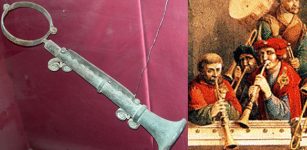 What Was The Medieval Shame Flute?
Ancient History Facts | Jan 27, 2020
What Was The Medieval Shame Flute?
Ancient History Facts | Jan 27, 2020 -
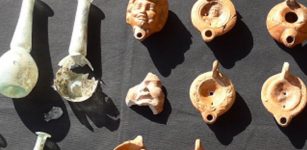 2,000-Year-Old Historical Tombs Unearthed In Close Vicinity To Ancient City Of Laodicea
Archaeology | Jan 23, 2020
2,000-Year-Old Historical Tombs Unearthed In Close Vicinity To Ancient City Of Laodicea
Archaeology | Jan 23, 2020 -
 Varahamihira: Indian Sage And One Of The Greatest Minds Of All Time
Featured Stories | Sep 13, 2016
Varahamihira: Indian Sage And One Of The Greatest Minds Of All Time
Featured Stories | Sep 13, 2016 -
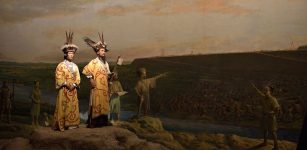 Ancient Liangzhu Culture Collapsed Due To Climate Change – New Study Says
Archaeology | Nov 25, 2021
Ancient Liangzhu Culture Collapsed Due To Climate Change – New Study Says
Archaeology | Nov 25, 2021 -
 Archaic Marble Lions On The Sacred Island Of Delos
Artifacts | Feb 27, 2021
Archaic Marble Lions On The Sacred Island Of Delos
Artifacts | Feb 27, 2021 -
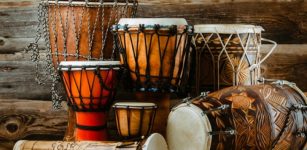 Bora People Of The Northwest Amazon Use Drums To Speak Over Large Distances
Archaeology | May 4, 2018
Bora People Of The Northwest Amazon Use Drums To Speak Over Large Distances
Archaeology | May 4, 2018 -
 New Clues To Behavior Of Neanderthal Hunting Parties
Archaeology | Mar 27, 2023
New Clues To Behavior Of Neanderthal Hunting Parties
Archaeology | Mar 27, 2023 -
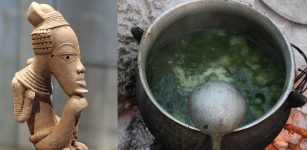 First Insight Into 3,500-Year-Old Cuisine Of The Enigmatic Nok Culture
Archaeology | Jan 17, 2022
First Insight Into 3,500-Year-Old Cuisine Of The Enigmatic Nok Culture
Archaeology | Jan 17, 2022 -
 Ancient City Of Sogmatar And Recent Discovery Of 5,000-Year-Old Children’s Toy
Archaeology | Oct 6, 2017
Ancient City Of Sogmatar And Recent Discovery Of 5,000-Year-Old Children’s Toy
Archaeology | Oct 6, 2017 -
 Artifacts Discovered At Yirra Confirm Aboriginal People Lived In Pilbara During The Last Ice Age
Archaeology | Apr 12, 2022
Artifacts Discovered At Yirra Confirm Aboriginal People Lived In Pilbara During The Last Ice Age
Archaeology | Apr 12, 2022 -
 Pancho Villa: Mexico’s Robin Hood – A Ruthless Bandit Or A Hero?
Featured Stories | Sep 9, 2025
Pancho Villa: Mexico’s Robin Hood – A Ruthless Bandit Or A Hero?
Featured Stories | Sep 9, 2025 -
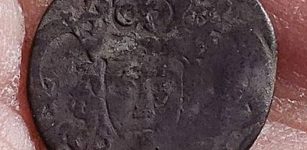 1,000-Year-Old Coin And Other Finds Unearthed During Excavations At Carrignacurra Castle in Cork
Archaeology | Oct 6, 2022
1,000-Year-Old Coin And Other Finds Unearthed During Excavations At Carrignacurra Castle in Cork
Archaeology | Oct 6, 2022 -
 Baroque-Period Marble Skull Analyzed With Standard Forensic Anthropological Techniques
Archaeology | Feb 16, 2022
Baroque-Period Marble Skull Analyzed With Standard Forensic Anthropological Techniques
Archaeology | Feb 16, 2022 -
 Oldest Case Of A Rare Genetic Condition Discovered
Archaeology | Aug 27, 2022
Oldest Case Of A Rare Genetic Condition Discovered
Archaeology | Aug 27, 2022 -
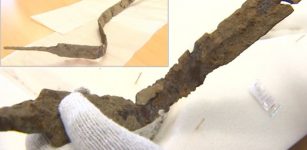 Rare 2000-Year-Old Celtic Sword Unearthed In East Bohemia
Archaeology | Sep 15, 2020
Rare 2000-Year-Old Celtic Sword Unearthed In East Bohemia
Archaeology | Sep 15, 2020 -
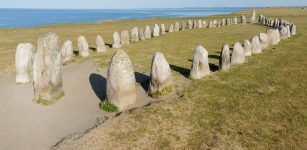 Enigmatic Ale’s Stones – Sweden’s Megalithic Ship-Like Formation
Featured Stories | Jan 17, 2023
Enigmatic Ale’s Stones – Sweden’s Megalithic Ship-Like Formation
Featured Stories | Jan 17, 2023 -
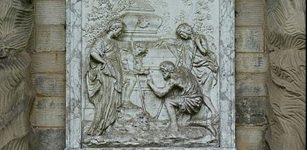 Shepherd’s Monument Mystery: Yet Another Undeciphered Inscription
Featured Stories | Jun 26, 2023
Shepherd’s Monument Mystery: Yet Another Undeciphered Inscription
Featured Stories | Jun 26, 2023 -
 Toruń Massive ‘Roundels’ Date Back 7,000 Years – Archaeologists Say
Archaeology | Jul 6, 2020
Toruń Massive ‘Roundels’ Date Back 7,000 Years – Archaeologists Say
Archaeology | Jul 6, 2020

